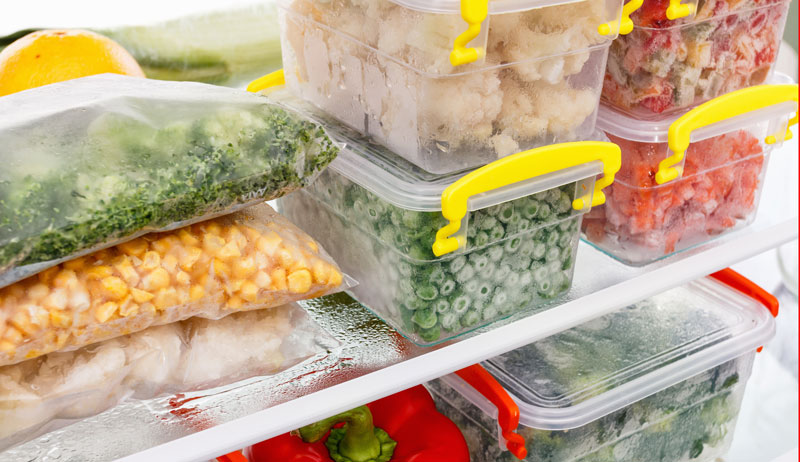
We just had our first frost warning in the Twin Cities this week, while other parts of the state had their first freeze warning. We even had snow showers along the Gunflint Trail in northern Minnesota. With the temperatures dropping and the growing season coming to an end, it has us northern gardeners scrambling to preserve everything left in our gardens before it’s all lost. And one of the simplest and most common methods for quickly preserving fresh garden produce is to freeze it.
Here are five tips and tricks for successfully freezing your harvest.
Quality Matters When You Freeze Produce
Only freeze fresh produce that doesn’t show any signs of damage or spoilage.
Pick the Right Container
When freezing liquids (such as soups and sauces), use containers with straight ridged sides or wide mouth glass jars. When liquids freeze, they expand upward and outward.
Glass jars with shoulders tend to break more often from expansion because, as the liquid freezes and pushes upwards, it cracks the shoulders off the jar. This is also why you must leave headspace when freezing liquids.
Leave at least 1 inch of headspace for pint size containers and 2 inches for quart size containers.
Read more: Need preservation ideas? Here are 15 to check out!
Blanching Is Better (Though Not Required)
Blanching is not a requirement but does tend to retain better color, flavor, texture and nutrients in vegetables compared to when frozen raw. Blanching is not required for fruit.

Blanching is recommended for nearly all vegetables by the National Center for Home Food Preservation.
Flash Freeze Your Berries
A tip for freezing berries is to individually quick freeze them, also referred to as “flash freezing”. Wash them, dry them completely and lay the berries in a single layer on a parchment paper-lined pan or dish.
Put the fruit in the freezer to freeze solid and once frozen solid, consolidate the frozen berries into a freezer bag or other container. This allows you to pour out the number of berries you need, versus having a blob of frozen berry-mess to thaw out.
This same method works for sliced peppers, beans, chopped rhubarb, grapes, etc.
Package Properly
Proper packaging is key to avoiding freezer burn. Freezer burn occurs when air gets to the food and moisture evaporates. To avoid freezer burn, use freezer bags and remove as much air as possible from the bag before sealing and freezing. You can also use containers specifically designed for freezing, straight sided jars or (even better) a vacuum sealer.

Frozen produce that’s continually kept at a temperature of 0°F or lower should keep for many, many years if sealed properly.
For more information on freezing and proper blanching times, visit the National Center for Home Food Preservation.




